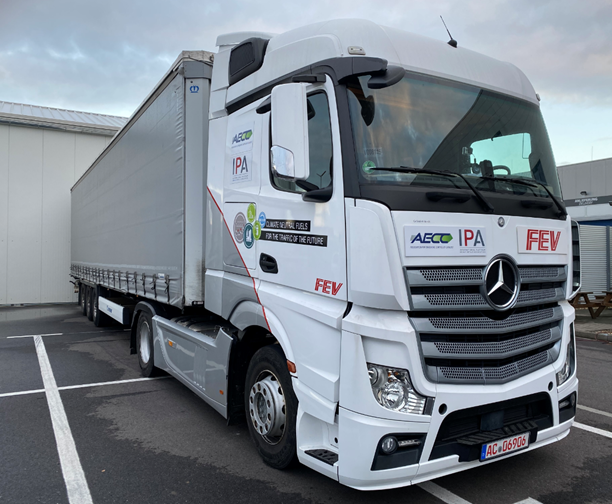Trucks, buses and coaches
Whereas for cars and light commercial vehicles the emissions test is conducted on a complete vehicle with emissions results and limits in mg/km, the variety of chassis types and body styles in which a heavy-duty engine could be installed means that a more practical approach is to test the engine system (including the exhaust system) and so the emissions results are expressed in terms of the engine work performed, so in mg/kWh.
As with cars, the emissions requirements for heavy-duty engines have developed over several stages, with Euro VI being introduced from January 2013. Engines are now tested over both steady-state and transient cycles and have to meet the emissions requirements on both. In addition, the Euro VI Regulation introduced in-service conformity testing performed on the vehicle with a Portable Emissions Measurement System (PEMS).
Until mid-2000, it was normally possible to meet the test cycle emissions requirements for heavy-duty engines only by developing the engine technology, without the need for exhaust gas aftertreatment, balancing the emissions of engine-out NOx and PM – as one increases, the other typically decreases. However, as emissions levels reduce, this ‘trade-off’ between NOx and PM on engine calibration becomes even more influential and Euro IV has thus forced the use of exhaust emission control systems since 2006.
Different technologies are used in these vehicles depending on the pollutant emissions to tackle. The Diesel Oxidation Catalyst (DOC) converts CO and HC but also helps decrease the mass of diesel particulate emissions.

The majority of manufacturers in Europe chose to use this NOx-PM trade-off to minimise engine-out particulate emissions and to then use Selective Catalytic Reduction (SCR) to control emissions of NOx as this method also allows improved fuel consumption (and hence reduced CO2 emissions) compared to the previous generation of engines. This technology requires a supply of urea reductant (AdBlue®) on board the vehicle and which is used at a few percent of the consumption of diesel fuel.
The alternative to this approach is to use Exhaust Gas Recirculation (EGR) to minimise the NOx, which is known for having an adverse effect on particulates.
Diesel Particulate Filters (DPF) are now used on all new European trucks and buses as the prime means of meeting the Euro VI emissions regulations which includes not only particulate mass but also particle number limits. Euro VI step E regulation has included the analysis of cold start emissions as well as the measurement of particle number on-road on compression (diesel) and spark (gasoline) ignition applications.
Also, many thousands of DPFs have already been retrofitted to existing vehicles – especially buses and refuse trucks, to meet local authorities’ requirements or incentive schemes to minimise urban particulate emissions. They are also available as additional original equipment from some vehicle manufacturers to meet these demands.
Heavy-duty applications that will serve urban and rural locations (refuse trucks, buses and last mile delivery trucks) will be prone to have a level of hybridisation in their powertrain. It is expected that micro and mild-hybrids will appear in the market in the short-medium term. Until now, there is no specific regulation covering hybridisation on heavy-duty pollutant emissions regulations.
AECC recently completed a HD Diesel Demonstrator vehicle project launched in 2020 focusing on reducing urban driving emissions with minimal impact on CO2 emissions. The HD Diesel demo programme focused on on-road measurements and studied critical operating conditions. The base vehicle used was a Euro VI C N3 (long haul) truck.
All details and available material can be found here.